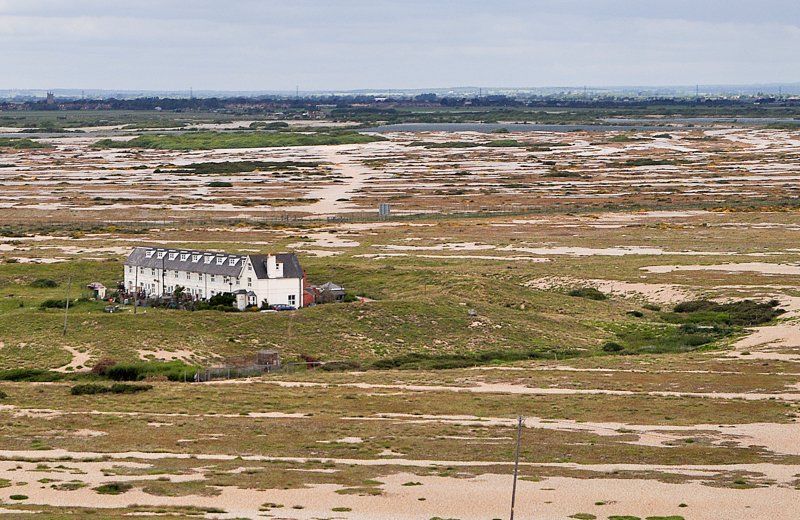The purpose of a bird observatory
To many the heyday of the bird observatory was during the 1950s and '60s but recent work by the network of current observatories suggests that the daily census information which each collects could be a valuable tool in the long-term monitoring of bird population.
The BOC was formed in 1946 to co-ordinate the work of the established observatories and standardise methods of data collection and is made up of representatives from each of the accredited observatories (there are currently 21 accredited observatories - see the map) and the British Trust for Ornithology (BTO). The definition of a bird observatory is given as:
"The Bird Observatories' primary purpose is to conduct long-term monitoring of bird populations and migration.
Individual Observatories are located at prime migration points, where a daily census is taken and other standardised methods of data collection are used in a defined recording area.
An integral part of observatory work is bird ringing, undertaken within the national scheme which is licensed under the Wildlife and Countryside Act 1981 and co-ordinated by the British Trust for Ornithology. This provides data for guiding conservation policies of such bodies as Natural England, the Natural Resources Wales, Scottish Natural Heritage and their counterparts in Ireland.
The Observatories enable and encourage volunteers to participate in scientific studies of birds and the environment. The results of these studies and more general information are made freely available to researchers and to the public who are welcome to visit Observatories."
This takes into account the realisation of the importance of the daily census data, the need to make this data available for wider scientific study, and the need to try and attract more birdwatchers/researchers to the observatories.
Observatories have made great strides in digitising the vast store of census data to make it accessible to researchers and several observatories have now been added their data to the BTO's BirdTrack programme.
Funding is a near-constant concern for many of the observatories. For most it only comes from membership schemes and visitors to the observatory. The need to juggle a warden's salary (where one is employed) with maintenance of buildings and costs associated with ringing is a tightrope act at the best of times. The growth of mobile birding, whereby people wait and see what is seen where before deciding what to do at weekends, had a serious impact on observatories during the 1980s and 1990s and many observatories have had financial concerns in recent years.
Although interest in chasing rarities is still high there does recently seem to have been a renewed interest in counting birds. Several new projects run by the BTO have generated much interest and there is huge interest in the Watch Groups run by the various county Wildlife Trusts, which are encouraging younger people to make observations on their environments.
If you have taken part in any of these then you could find a stay at one of the observatories very rewarding. You will, hopefully, see good numbers of migrants be they on land or sea and, what's more, your birding will count by contributing to the daily census. The mainland observatories are obviously the most accessible and also have other good birding spots nearby should the weather not be conducive to migration. The island-based ones are a little harder to get to, require at least a week's stay, and in the case of North Ronaldsay and Fair Isle, getting to the islands is not cheap but the experience is almost certainly going to be worth the effort.
A visit to Fair Isle in May could coincide with an arrival of Bluethoats and Red-backed Shrikes and you would also see the massive seabird colonies at their busiest with the cliffs of the west side of the island teeming with Northern Fulmars, Kittiwakes and auks. A visit to Cape Clear in August could well produce huge movements of Manx Shearwater, European Storm Petrel and Northern Gannet along with the excitement of Great Shearwater and Cory's Shearwaters and several species of large whale and dolphin. If you visit North Ronaldsay during peak months you could witness a lighthouse attraction where nocturnal migrants are attracted to the bright light on overcast nights. A large attraction is a memorable event and really tests your skills at identifying birds from their calls!
The east coast observatories at the Isle of May, Filey, Spurn, Gibraltar Point, Holme and Landguard are perhaps at their best in the autumn, with the possibility of large movements of common migrants as well as the added spice of possible eastern vagrants, although the Isle of May can see similar arrivals to Fair Isle and North Ronaldsay during spring.
The south coast observatories such as Sandwich Bay, Dungeness and Portland can have good days in both spring and autumn although spring arrivals tend to move through very quickly - you can literally see the birds making their way north up through the hedges at Portland in the spring. Sea-watching can be good in both spring and autumn and even winter at Dungeness can see large movements and plenty of activity at the 'patch' - the outlet for the water used in cooling the nearby power station.
Accommodation, where available on site, is usually simple, self-catering, hostel-type, although this is reflected in the price at around £10-15 per night. North Ronaldsay is a little different in offering full board accommodation - this level of service is reflected in the price, a night costs in the region of £55-65 per night on North Ronaldsay, prices dependent on whether you are in a dormitory, twin rooms or single.
The observatories are open to everyone, you do not need to be a ringer or be hugely experienced - a stay will appeal to anyone who enjoys the wonder and excitement of migration. Further information can be found by contacting the people in the list below or by visiting web sites where they are available, also listed below.





